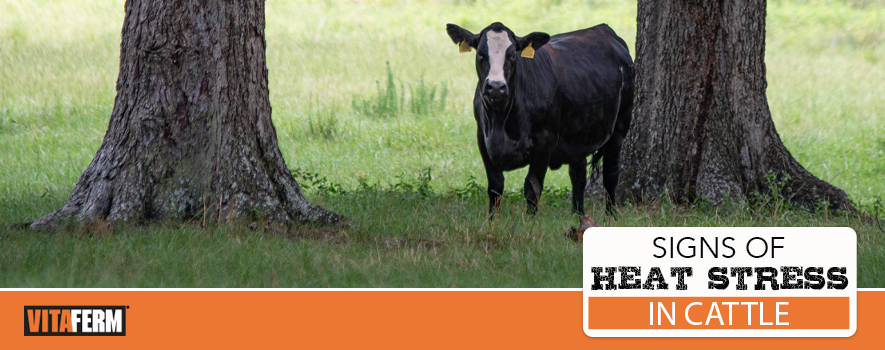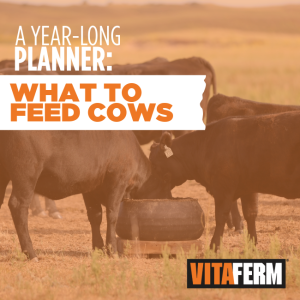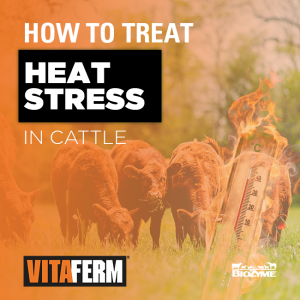
Raise your hand if you enjoy heat and humidity? If you are in production agriculture and specifically in the livestock business, chances are those hands remained at your side or maybe tucked deep inside your pockets. Summer’s high heat and humidity brings extra challenges to livestock producers when it comes to overall health and performance.
Heat stress is a real challenge across species. Regardless if you’re running sheep in Texas, grazing stockers in Wyoming or involved in poultry production in the Carolinas, the combination of heat and humidity can wreak havoc on the health of your herd or flock.
What is heat stress? Heat stress occurs when the animal’s ability to release heat becomes inhibited due to the overwhelming high temperatures. Typically heat stress isn’t caused by excessive heat alone; but is also triggered by high humidity and a decrease in air movement. Livestock, like humans, are most comfortable in their thermoneutral zone.
“The Thermoneutral Zone (TNZ) is the environmental temperature range in which the least effort is required by an animal to regulate body temperature. In the TNZ, an animal is most comfortable, has the fastest growth rate, and achieves the most efficient feed-to-gain ratio. This temperature zone is highly variable and depends on factors such as species, humidity, time of year, age, acclimation, amount of fat or hair coat insulation, level of production, wind, and other factors,” according to a Washington State University Extension Fact Sheet.
It’s important to point out that heat stress varies by species and even within species and by geographic location.
“The unfortunate part is everybody’s situation is different based on regional climate differences,” said Kevin Glaubius, Senior Manager for Formulation at BioZyme® Inc. “Where a backgrounder in Texas might have to deal with severe heat for seven months, someone in North Dakota might have extreme heat for just two months. However, the commonality is understanding the cascade of events that go on with heat stress – symptoms to look for and what to do.”
Signs of Heat Stress
During the summer months especially, producers should take extra care to look over their livestock on a regular basis to monitor factors that can lead to heat stress. Watch for behavioral and physical signs that your animals that could be experiencing heat stress so you can effectively mitigate it before it turns from bad to worse.
The first visible sign of heat stress you should look for is an increased respiration rate. The increase in respiration rate leads to increased air volume intake, which can ultimately lead to other sicknesses. With increased air intake, animals are inhaling more dust, dirt, bacteria and viruses into their bodies, which can quickly lead to bigger problems.
The second sign of heat stress, and the one most commonly thought of, is animals that seek out shade and water during the peak heat of the day. This disrupts the normal feeding pattern of continuously grazing and consuming smaller meals. That disruption shifts to night grazing and slug feeding where they eat more at once due to increased hunger. Slug feeding leads to acidosis and bloat in ruminants, which can lead to more health issues or death. When they bunch up during the day, they also are more likely to be exposed to sickness because of shared germs – think of containing school kids in an enclosed room with no fresh air.
Other typical signs include lethargy, reduction or total loss of appetite, panting, drooling, aimless wandering or staggering and ultimately death. In addition, increased body temperature and increased heart rate also symptoms of heat stress.
Effects of Heat Stress
Heat stress can cause detriment to the herd or flock both from a performance and reproductive standpoint. Animals that are not eating or grazing are not gaining. Heat stress can cause shorter gestation lengths resulting in lighter birth weights and immune-compromised offspring.
Extreme heat is a major cause of poor reproductive performance. Females can face problems initiating and maintaining pregnancy. The males can become sterile and also experience a lack of libido.
Prevention and Treatment
Preventing heat stress before it happens is ideal; however, in some cases you will need to treat your animals for heat stress. Treatment is often the same as preventative measures, but with more care and caution. Let’s explore some of the ways to mitigate and treat heat stress
The first step in alleviating heat stress for any species is to provide plenty of clean, fresh, cool water. Keeping your animals hydrated is critical in preventing heat stress since dehydrated animals have problems maintaining body temperature. If you provide plenty of water sources, spread them across several areas to help eliminate crowding of animals at one particular location. Also, keeping water under shade will help keep the animals gathered under the shade.
Don’t work your livestock during extreme heat. If you need to work your livestock, plan any work as early in the morning as possible before the day heats up. Working animals causes stress and combined with heat stress can cause serious issues. If you need to transport your livestock, do so early in the day or later in the evening when the temperature cools.
Provide shade. Sometimes trees are enough. If you are running a feedlot or grazing in a large open area where trees are not an option, consider building some shade structures. If you have a building that serves as shade, make sure it has proper ventilation and circulation like a fan. An enclosed structure with minimal air movement will only contribute to your animals’ heat.
Adjust feeding times. Digestion contributes to increased body heat, therefore, heightening the chances of heat stress. Wait until later in the day for your afternoon feeding, and if you only feed once per day, make that feeding in the early afternoon.
For poultry, all of the above mentioned are critical to heat stress mitigation. However, you might also want to provide your birds with added electrolytes through their water. A water-soluble electrolyte can be used during times of heat stress to help replenish electrolytes that have been lost. Always follow the instructions on the package when using electrolytes. Electrolytes also increase your bird’s water intake, which is definitely a good thing when trying to help them cool off. When you mix up an electrolyte solution, try freezing it in ice cube trays. You can add the cubes to your flock’s drinking water as needed as an additional way to cool them down.
Other Nutritional Considerations
Finally, keeping Amaferm® in your animals’ diets, especially during the summer heat, is especially beneficial to helping eliminate heat stress. Amaferm is a precision biotic designed to increase intake, digestion and absorption of feedstuff. Feeding Amaferm during heat stress has multiple benefits including improved digestibility, increased energy availability, improved rumen function and less loss of performance. The improved digestibility observed with Amaferm provides more energy to the animal during heat stress when intake is reduced.
Amaferm is found in BioZyme® products created specifically to help maintain body temperature and mitigate heat stress.
HEAT® is unique blend of clove, cinnamon and chili pepper. HEAT provides capsaicin to help maintain circulation to support animal performance in both heat and fescue situations. Capsaicin and Amaferm are both research-proven to help maintain body temperature. HEAT also contains garlic to help deter insects. Keeping insects controlled is important to heat stress because insects like to gather on animals when they bunch up. Insect bites cause added stress and economic losses.
A lowered body temperature has several key benefits. It helps get the females in the herd or flock bred and keeps them bred. It helps keep those animals out grazing, which means the potential for gaining is greater, even in warmer climates.
The HEAT line-up includes several products tailored to specific production phases that should be used for anytime temperatures get hotter than 70 degrees.
A complete list of HEAT products includes:
- DuraFerm® Sheep Concept•Aid® HEAT® – A highly fortified, free-choice vitamin and mineral supplement for sheep specifically designed to help prevent heat stress during temperatures of 70 degrees or above. Especially beneficial to combat the challenges of getting ewes bred in the summer.
- VitaFerm® Concept•Aid® 5/S HEAT® – A cow breeding mineral that is designed to help get cows breed and help them maintain pregnancy during the summer heat.
- VitaFerm® HEAT®
- VitaFerm® HEAT® Auero 3G, to help with the control of Anaplasmosis
- VitaFerm® HEAT® with ClariFly®, Includes ClariFly® to stop flies in their larval stage.
- VitaFerm® HEAT® Tub
- VitaFerm® Gain Smart® Stocker HEAT®
- VitaFerm® HEAT® Stress Tub
For poultry and hogs, consider Vita Charge® HydraBoost™ AVX and Vita Charge HydraBoost, respectively, unique, nutrient rich liquid supplements for commercial swine and poultry that increase water and feed intake and maintain gut immunity, thereby increasing overall health and rapidly restoring digestive balance. Although not designed specifically for heat stress, it is designed to help alleviate stress and encourage water intake, both helpful during times of heat stress.
Raise your hand if you’re ready to eliminate some stress in your life. Combine heat stress with other stressors, and see a decrease in performance and pregnancies, neither good for the bottom line. Take proactive measures to mitigate stress in your flock and herd and start those measures with plenty of cool water and a nutrition program that helps maintain body temperature.


